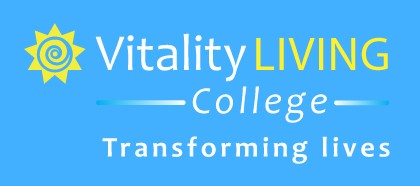EFT For PTSD: Unlocking Healing Through Tapping Techniques

In this article, you will learn about Post Traumatic Stress Disorder (PTSD), its causes, risk factors, symptoms and possible complications, and how to treat PTSD including EFT Tapping therapy.
At every moment, we feel life is difficult. Every day seems to be filled with anxiety after anxiety, stress after stress, and there appears to be no way out.
Living with Post-Traumatic Stress Disorder (PTSD) is a constant fight. It can cast a long shadow over one's life, affecting mental, emotional, and physical well-being. Those who suffer and fight from it are truly life survivors.
“PTSD doesn't make you weak. It makes you a survivor.”
DaShanne Stokes
WHAT IS POST-TRAUMATIC STRESS DISORDER?

Post Traumatic Stress Disorder (PTSD) is a mental health condition triggered by a terrifying event experienced or witnessed by an individual.
It can result from experiencing extremely stressful situations like war, accidents, or even sexual assault.
PTSD is a long-term effect of traumatic experiences that result in extreme fear, chronic pain, helplessness, or horror.
The majority of people experience traumatic situations in their lives and find it extremely difficult to adjust and cope, but with proper self-care, they usually improve.
However, if your symptoms worsen and begin to interfere with your regular activities, you may be suffering from posttraumatic stress disorder (PTSD).
Generally, people with PTSD have powerful, unsettling thoughts and sensations about the traumatic incident. It is known to continue long after it has occurred.
They may have flashbacks or nightmares about the event, and feel sad, fearful, angry, and detached or estranged from others.

WHAT ARE THE CAUSES OF POSTTRAUMATIC STRESS DISORDER?
PTSD is likely caused by a complicated mix of factors, as is the case with most mental health issues:
Inherited mental health risks, such as a family history of anxiety and depression.
Stressful experiences, including the amount and intensity of trauma you've experienced in your life.
Military confrontation
Natural disasters
Serious accidents
Terrorist attacks
Loss of a loved one, whether or not this involved violence
Rape or other types of abuse
Personal assault
Being a victim of crime
Receiving a life-threatening diagnosis
Traumatic brain injury
WHAT ARE THE RISK FACTORS OF POSTTRAUMATIC STRESS DISORDER?
Post-traumatic stress disorder can affect people of any age. According to studies, while men are more likely to be victims of violence, women are more likely to have PTSD (1).
Some risk factors are as follows:
Anxiety or depression, among other mental health issues.
Have issues with substance abuse, such as binge drinking or drug use.
A lack of a strong family and social support system.
The hippocampus (involved in the processing of emotions and memories) appears to be different in those with PTSD compared to others, according to brain scans.
In patients with PTSD, levels of hormones (ordinarily released in a fight-or-flight situation) appear to be different (2).
PTSD SYMPTOMS

Symptoms of posttraumatic stress disorder generally occur within a month following your traumatic experience. However, they can also take years to appear.
1.
Intrusive Memories
Individuals with PTSD often experience intrusive and distressing thoughts related to the traumatic event. Intrusive memories can cause the following symptoms:
Unwanted, uncomfortable recollections of the terrible incident.
Reliving the terrible incident as if it were happening for the first time (flashbacks).
Dreams or nightmares concerning the terrible experience are upsetting.
Physical or emotional reactions to something that reminds you of the traumatic incident.
2.
Avoidance and Numbing
People with PTSD may go to great lengths to avoid reminders of the traumatic event. They might avoid places, people, activities, or situations that trigger memories of the trauma.
They may also experience emotional numbing, which can make it difficult for them to experience positive emotions, form close relationships, or show interest in activities they once enjoyed.
Symptoms of avoidance may include:
Attempting to avoid thinking about or discussing the painful occurrence.
Avoiding situations, activities, or people that bring up memories of the terrible occurrence.
3.
Negative Changes in Thoughts and Attitudes
Individuals with PTSD often experience negative changes in their thoughts and mood. This can include persistent negative beliefs about oneself or the world, distorted blame, or guilt.
Some other symptoms of negative changes in thoughts and attitudes may include:
Negative feelings against oneself, others, or the world.
Uncertainty about the future.
Memory issues, such as forgetting critical details about the traumatic incident.
Maintaining close relationships is difficult.
Distancing yourself from family and friends.
Lack of enthusiasm for activities you once used to enjoy.
Positive emotions that are difficult to come by.
Experiencing emotional numbness.
Mental health problems, such as depression, phobias, and anxiety.
4.
Changes in Physical and Emotional Reactions
Also known as arousal symptoms, this category of symptoms involves an exaggerated state of alertness and heightened anxiety.
Individuals with PTSD may be easily startled, have trouble sleeping, experience irritability, and have difficulty concentrating. Here are some of the symptoms:
Being easily frightened or startled.
Always on the lookout for danger.
Self-destructive behaviour such as binge drinking or speeding.
Having trouble sleeping or concentrating.
Irritability, furious outbursts, or aggressive behaviour, and other signs of irritability.
Guilt or humiliation that is overwhelming.
Emotional mood swings.
A weakened immune system can lead to more frequent infections.
Some physical effects include sweating, shaking, headaches, dizziness, stomach problems, chronic pain, aches, and physical pain.
WHAT ARE THE POSSIBLE COMPLICATIONS OF PTSD?
Post-traumatic stress disorder (PTSD) can affect every aspect of your life, including your career, relationships, health, and enjoyment of regular activities.
PTSD can raise your risk of developing other mental health issues, such as:
Anxiety and depression
Drug or alcohol abuse problems
Eating disorder
Suicidal ideas and behaviour
WHAT ARE THE SIGNS AND SYMPTOMS OF PTSD IN KIDS BELOW 6?
Post-Traumatic Stress Disorder (PTSD) can affect individuals of all ages, including young children. Common signs and symptoms in this age group can include:
Young children may exhibit behaviour typical of a younger age, such as bedwetting or thumb-sucking, which they had previously outgrown.
Frightening dreams that may or may not involve components of the traumatic event.
Re-enacting the painful event or aspects of the traumatic event through play.
Clinginess to caregivers and increased separation anxiety.
Developing new fears and phobias, often related to the trauma.
It's important to note that very young children may not have the vocabulary to express their feelings and experiences fully.
Therefore, if you suspect a child aged 6 or below may have PTSD, it's crucial to consult with a mental health professional or EFT practitioner who specialises in child trauma and development.
Early intervention and appropriate treatment can make a significant difference in helping the child cope with the effects of trauma and work towards healing and recovery.
PREVENTION OF PTSD
Many people experience PTSD-like symptoms after surviving a terrible event, such as being unable to stop thinking about what happened. Trauma can cause feelings of fear, worry, wrath, depression, and guilt.
The number of individuals who are subjected to trauma, on the other hand, do not acquire long-term post-traumatic stress disorder.
Getting aid and support as soon as possible might help prevent typical stress reactions from becoming worse and leading to PTSD. This may entail reaching out to family and friends who can listen and provide support.
It could involve seeing a mental health expert for a short period of therapy. Some people may find it beneficial to seek help from their faith community.
SEVERITY OF PTSD
It is important to note that the severity of PTSD symptoms changes with time. When you're anxious in general, or when you're reminded of what happened to you, you may have greater PTSD symptoms.
For example, you may see a report on the news about a sexual assault and feel overcome by memories of your assault.
Talk to your doctor or a mental health professional if you've been having troubling thoughts. Especially when feelings about a traumatic event last longer than a month and you are having difficulties regaining control of your life.
Getting treated as soon as possible can help to prevent the symptoms of PTSD from worsening.

HOW TO TREAT PTSD?
The purpose of PTSD treatment is to relieve mental and physical pain, improve everyday functioning, and assist the person in better managing the triggering incident.
Psychotherapy (a form of counselling), medicine, or both may be used to treat posttraumatic stress disorder.
Fortunately, there are several therapeutic approaches that can help individuals manage their symptoms and regain control of their lives.
Following are the methods that can be used as alternative treatment to treat posttraumatic stress disorder:
1.
Cognitive Behavioral Therapy (CBT)
Cognitive Therapy is a widely used therapeutic approach in treating PTSD. It focuses on recognising and changing thought patterns that contribute to negative feelings, and behaviours.
In the context of PTSD, individuals work with a trained therapist to identify and challenge distorted beliefs and thought processes related to their traumatic experiences.
By altering these cognitive patterns, individuals can develop healthier coping strategies and reduce the emotional stress associated with their memories.
2.
Prolonged Exposure Therapy (PE)
Prolonged exposure therapy is another cognitive-behavioural therapy specifically designed for individuals with PTSD.
It involves gradually and systematically confronting traumatic memories or situations that generate anxiety. Through repeated exposure to these distressing elements, individuals can reduce their fear and emotional responses over time.
This therapy aims to desensitize individuals to their traumatic triggers, allowing them to regain a sense of control and reduce avoidance behaviours.
3.
Group Therapy
It is a valuable component of PTSD treatment, as it provides individuals with a supportive and empathetic environment to share their thoughts, worries, and feelings with others who have experienced similar traumatic events.
Being part of a group of peers who understand the challenges of PTSD can be therapeutic in itself. It can help individuals feel less isolated, enhance their sense of belonging, and provide opportunities for mutual support and encouragement.
4.
Medication
It's worth noting that medication can also play a role in treating PTSD.
Antidepressant medications, such as selective serotonin reuptake inhibitors (SSRIs) and serotonin-norepinephrine reuptake inhibitors (SNRIs), are often prescribed to help manage the symptoms of PTSD.
These medications can help alleviate depression and anxiety symptoms associated with the condition.
5.
Emotional Freedom Techniques (EFT)
EFT Tapping for PTSD serves as a powerful tool to facilitate the body's natural ability to release trauma associated with past traumatic experiences.
It is a clinically proven method that involves tapping on points of the body and is an alternate therapeutic mind-body method.
It has garnered a reputation for its effectiveness and long-lasting results, all while being remarkably time efficient.
It is really important to have a self-help tool that works on psychological acupressure points to help you to treat your PTSD.
The concept of tapping is based on the idea that emotional distress is often caused by disruptions in the body's energy system, and by tapping on specific acupressure points while focusing on the issue, these disruptions can be cleared.
Imagine what if you could let go of all the trauma and disturbing emotions you've been holding on to?
Accepting that you are going through anything and that you require assistance is the first step.
Go ahead and seek expert assistance once you've realised you need it. After all, overcoming PTSD will only help you reach your mental health goals and improve your quality of life.
If you would like to experience the power of EFT Tapping first-hand, just download the EFT Tapping Booklet below.
HOW EFT TAPPING HELPS IN REDUCING PTSD SYMPTOMS?
The effectiveness of EFT Tapping in reducing PTSD symptoms can be attributed to several key factors:
1.
Relieves Stress
EFT Tapping operates by inducing a state of calmness within the body. This profound relaxation technique allows the body's various systems to shift toward a more balanced and relaxed state of functioning, relieving the physiological responses associated with PTSD.
2.
Emotional Trauma Intensity
By employing specific EFT tapping points, EFT Tapping effectively diminishes the intensity of emotional trauma. It allows individuals to address and release the emotional burden associated with past traumatic events, gradually reducing the emotional charge linked to these memories.
3.
Cognitive Restructuring
EFT Tapping has been shown to alter the brain's processing of emotional information, particularly in the context of PTSD.
Those suffering from PTSD often perceive traumatic memories as if they are occurring in the present, leading to distressing symptoms such as flashbacks, hypervigilance, and nightmares (1).
EFT Tapping helps reframe these traumatic memories, allowing individuals to view them as past events and reducing their emotional impact.
Individuals with PTSD often store traumatic memories as if they are happening in the present, leading to symptoms such as flashbacks, nightmares, and emotional disturbance.
They may have isolated themselves from normal life due to a perceived lack of safety, resulting in physical and emotional disconnection.
EFT TAPPING TECHNIQUE FOR PTSD
The following is a sample EFT Tapping technique for PTSD:
Step 1:
Identifying the surface symptoms associated with PTSD, such as mood swings, nightmares, or any other symptoms.
Step 2:
Start exploring memories associated with the emotions found at the surface symptoms.
Step 3:
Explore memories of past trauma that is not resolved yet. Work gently with the techniques you're comfortable with, such as Tell the Story, or Movie Technique.
This part can take a couple of weeks depending on how much trauma is present.
Step 4:
Explore any limiting beliefs that may have been born. Sometimes, with PTSD, people can have some limiting beliefs related to the trauma, say, "I can't do it," or "I am a failure". These limiting beliefs need to be worked with.
Step 5:
Lastly, end the procedure with positive tapping, and boosting their confidence. Reassure them and help them out on how they can start to rebuild their lives again leaving the trauma in the past.
In addition to EFT, various psychological treatments, such as cognitive therapy and group therapy, can be beneficial for individuals with PTSD.
However, EFT's unique approach to addressing negative emotions, physical symptoms, and psychological stress sets it apart as an effective and efficient treatment for PTSD.
By tapping into the body's energy system and offering a holistic approach to emotional healing, EFT Tapping continues to pave the way for profound and lasting relief for those who have experienced trauma.
WHAT ARE ACUPUNCTURE POINTS IN EFT TAPPING?
Acupuncture points are strategically utilised to alleviate the physical and emotional symptoms of PTSD. Let's explore how the following meridian points play a crucial role in the EFT treatment for PTSD:
1.
Karate Chop Point:
The Karate Chop Point, located on the side of the hand, is commonly used as the "set up" point in EFT. It helps establish the initial connection with the issue at hand and sets a positive affirmation. For individuals with PTSD, this point can be used to acknowledge the emotional distress associated with traumatic memories and lay the foundation for healing.
2.
Eyebrow Point:
Tapping on the Eyebrow Point, found at the beginning of the eyebrow where it meets the nose bridge, can assist in releasing the intensity of emotional trauma. Individuals with PTSD can use this point to address specific memories associated with their condition and gradually reduce the emotional charge linked to these experiences.
3.
Collarbone Point:
The Collarbone Point, located just below the collarbone near the breastbone, helps in relieving stress and emotional tension. It can be particularly beneficial for individuals with PTSD who may experience heightened anxiety or stress responses.
4.
Under Arm Point:
Tapping on the Under Arm Point, situated on the side of the torso approximately four inches below the armpit, helps in calming the nervous system. This can be especially useful for individuals with PTSD who may frequently experience physiological symptoms such as increased heart rate or hypervigilance.
5.
Nose and Chin Points:
These specific meridian points can be tapped to further address and release emotional trauma associated with PTSD. The act of tapping on these tapping points can contribute to the reduction of negative emotions and promote relaxation.
By systematically tapping on these key meridian points while focusing on specific traumatic memories, individuals with PTSD can gradually reduce the emotional distress associated with their experiences.
EFT not only helps in alleviating the immediate emotional response but also contributes to a shift in the way the brain processes traumatic information.
This holistic approach to addressing PTSD through the body's energy flow, in conjunction with traditional psychological treatments, offers hope and healing to those struggling with the condition.
OTHER EFT METHODS FOR TREATMENT OF PTSD
EFT offers various methods for addressing trauma, they are as follows:
Tearless Trauma
This is a very gentle way of using double dissociation to keep the client safe from abreaction and is usually the best starting point when working with a specific traumatic event. In short, locate a specific trauma, put it on a movie screen, and tap around it until the intensity comes down
The Movie Technique
This is the same principle as Tearless Trauma only without the double dissociation. If the trauma is not perceived as too intense then this would be a safe starting place too.
Here, you create a mini movie of the incident and measure the intensity. You can stop the movie anytime the intensity increases and tap around it. Keep going until the whole movie is clear of any emotional intensity.
Telling The Story
This is an excellent way of testing your results and clearing up any remaining undetected aspects.
Ideally, use this once you feel you have reduced the intensity to an acceptable level, or cleared it completely. However, sometimes you will need to use it immediately, as detailed above.
Here, you narrate the event that is triggering and tap around it at every stage. Test by asking yourself to tell the entire story from start to finish.
Your work is completed when you can do this and remain calm throughout.

DOES EMOTIONAL FREEDOM TECHNIQUE (EFT) WORK FOR PTSD?
A successful treatment strategy for PTSD entails a multi-faceted approach that addresses both mental and physical signs, with the ultimate goal of alleviating suffering and promoting recovery.
Emotional Freedom Techniques (EFT) is an alternative therapy method that encourages individuals to acknowledge and embrace the emotional and psychological challenges that arise from their trauma. By doing so, you embark on a path of self-compassion and healing.
A 2012 journal assessed seventy-seven male Haitian seminarians for posttraumatic stress disorder (PTSD) following the 2010 earthquake. 62% of them exhibited scores in the clinical range (>49). EFT training method that helps in treating PTSD symptoms in traumatised populations was applied to the participants with 2 days of instructions (3).
In fact, many randomised controlled trials of EFT show that only a few treatment sessions are effective in treating PTSD. A systematic review of one of the randomised clinical trials of EFT revealed that the symptoms of PTSD in veterans dropped by 64% after just 6-hours long sessions (4).
Some of the symptoms of PTSD include constant nightmares, insomnia, anger, disconnecting from the external world, and in extreme cases even causing self-harm.
In such a situation a significant decrease of 64% in the symptoms following the clinical guidelines could be life-transforming! It can help restore balance in PTSD patients. There is a huge psychological trauma symptom improvement.
Kaiser Permanente one of the largest hospital systems in the US, taking care of more than 10 million patients each year, also says that Emotional Freedom Techniques treats complex PTSD successfully in 10 sessions or less.
EFT Tapping is, thus safe, and can be used as a self-help practice and a primary evidence-based treatment for PTSD.
FREQUENTLY ASKED QUESTIONS
EFT Tapping can be a helpful self-help technique for some individuals dealing with PTSD, but it's not a substitute for professional mental health treatment.
If you have PTSD or suspect you do, it's essential to seek help from a qualified mental health professional who can provide appropriate treatment, which may include therapy, medication, or a combination of approaches.
Yes, PTSD is a complex and often misunderstood condition because of the following reasons:
While many people develop symptoms of PTSD shortly after a traumatic event, some individuals experience delayed onset. This means that symptoms may not appear until months or even years after the traumatic incident.
People with PTSD may experience episodes of dissociation, where they feel disconnected from their own body or the world around them. This can manifest as feeling numb, as if in a dream, or even as an out-of-body experience.
PTSD can affect not only those who directly experience trauma but also those who are indirectly exposed to it. This is known as secondary trauma or vicarious trauma and can impact first responders, healthcare providers, or even family members of trauma survivors.
PTSD can have physical effects on the body, including changes in brain function, increased inflammation, and an elevated risk of certain medical conditions such as cardiovascular disease.
PTSD often co-occurs with other mental health conditions, such as depression, anxiety, and substance use disorders. Treating these co-occurring conditions can be essential for effective recovery.
Understanding these less-known aspects of PTSD can help healthcare professionals and support networks provide more effective care and support for those dealing with the condition.
I am glad that you are choosing to heal yourself. Here's how you can use EFT Tapping for PTSD:
Identify the Issue: Begin by identifying the specific traumatic memory or the emotional issue you want to address. This is crucial as it helps you to pinpoint the focus of your tapping.
Rate the Intensity: On a scale of 0 to 10, rate the intensity of your distress related to the issue. This provides a baseline to measure your progress.
Setup Statement: Create a setup statement, which acknowledges the problem and combines it with a self-acceptance affirmation. For example: "Even though I have this PTSD from the car accident, I deeply and completely accept myself."
Tapping Sequence: Tapping follows a specific sequence of acupressure points, usually starting with the karate chop point on the side of your hand. Then, you'll tap on points like the top of your head, the eyebrow, the side of the eye, under the eye, under the nose, the chin, the collarbone, and under the arm. While tapping, repeat a shortened reminder phrase, such as "this PTSD."
Reassessment: After completing one round of tapping, pause to take a deep breath and assess your distress level. Keep tapping and repeating the sequence until your distress level decreases.
Reframe: As your distress level decreases, you can start to reframe the issue positively. For example, "Even though I had this PTSD from the car accident, I choose to heal and find peace."
Closure: After several rounds of tapping, reassess your distress level. If it has significantly decreased or is at zero, you can consider the session closed.
CONCLUSION
EFT Tapping offers a holistic approach that goes beyond just managing Post Traumatic Stress Disorder symptoms.
This technique promotes a deeper mind-body connection, allowing individuals to reconnect with their emotions and experiences in a safe and supportive manner.
Just imagine if such profound transformations can occur in war veterans, how much more can you benefit from using EFT Tapping in your life?
Hope is what will lead you to a happy life! And we at Vitality Living College, look forward to seeing each one of you happy.
Love,
Dr Rangana Rupavi Choudhuri (PhD)
P.S. Want to discover if EFT is right for you? Book a Complimentary Discovery Call.
In summary, Post-Traumatic Stress Disorder (PTSD) can be an incredibly challenging condition, but it doesn't have to define or control your life and happiness. Overcoming PTSD is an achievable goal, and there are clinically proven methods that can make a significant difference in your journey to recovery. Among these methods, EFT Tapping emerges as a powerful and effective tool for addressing the debilitating symptoms associated with PTSD. It enables individuals to reduce the overwhelming tension that often accompanies PTSD, fostering a sense of calm and well-being.
References:
- https://staging.vitalitylivingcollege.info/training-seminars/eft-training-course/what-is-eft/eft-clinical-study/
- https://pubmed.ncbi.nlm.nih.gov/29468884/
- Post-Earthquake Rehabilitation of Clinical PTSD in Haitian Seminarians | Energy Psychology Journal
- PTSD Treated Successfully in 10 Sessions or Less (scienceoftapping.org)

Learn Emotional Freedom Techniques for self healing or to become professionally qualified - More
Our other seminars:
For the full calendar of events.
Other articles you may be interested in:



